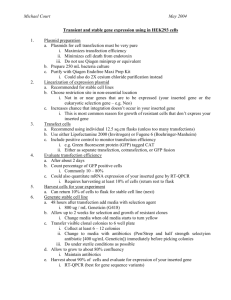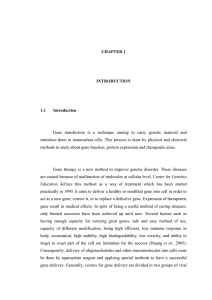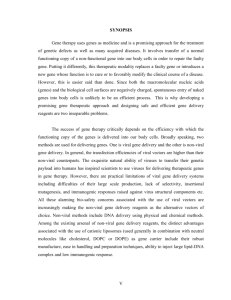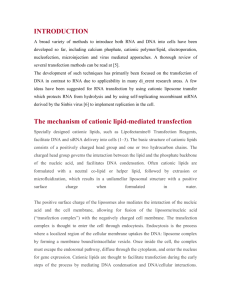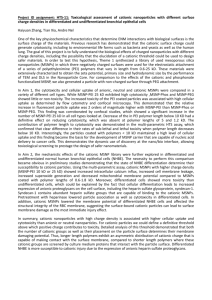Design of controlled gene delivery system based on biodegradable
advertisement
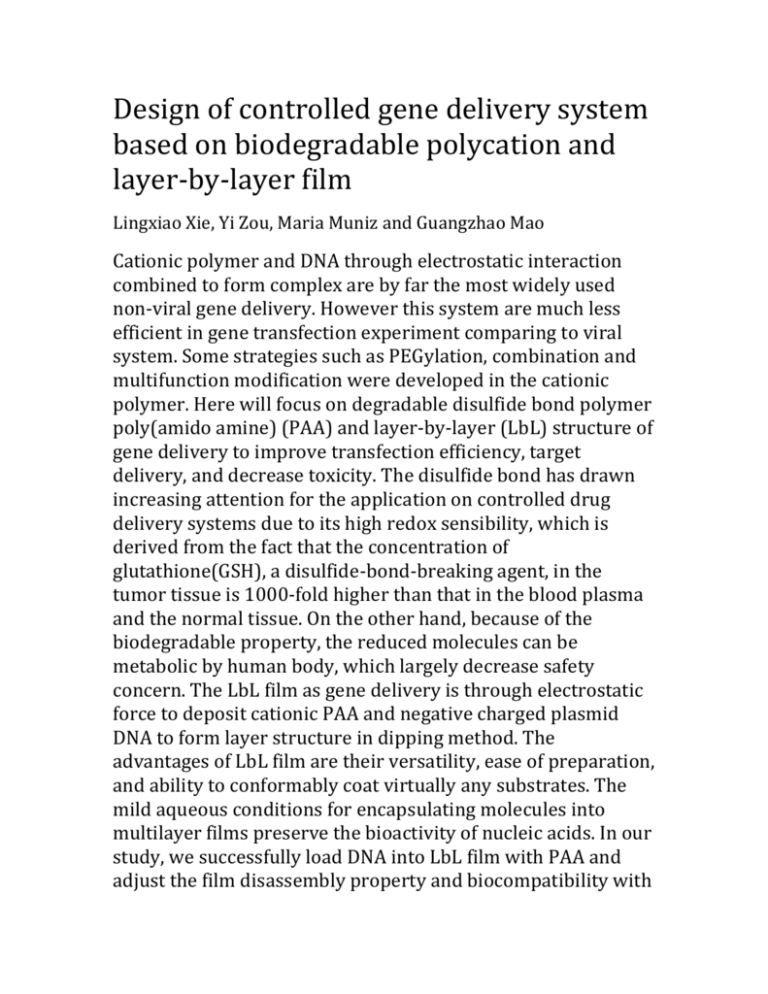
Design of controlled gene delivery system based on biodegradable polycation and layer-by-layer film Lingxiao Xie, Yi Zou, Maria Muniz and Guangzhao Mao Cationic polymer and DNA through electrostatic interaction combined to form complex are by far the most widely used non-viral gene delivery. However this system are much less efficient in gene transfection experiment comparing to viral system. Some strategies such as PEGylation, combination and multifunction modification were developed in the cationic polymer. Here will focus on degradable disulfide bond polymer poly(amido amine) (PAA) and layer-by-layer (LbL) structure of gene delivery to improve transfection efficiency, target delivery, and decrease toxicity. The disulfide bond has drawn increasing attention for the application on controlled drug delivery systems due to its high redox sensibility, which is derived from the fact that the concentration of glutathione(GSH), a disulfide-bond-breaking agent, in the tumor tissue is 1000-fold higher than that in the blood plasma and the normal tissue. On the other hand, because of the biodegradable property, the reduced molecules can be metabolic by human body, which largely decrease safety concern. The LbL film as gene delivery is through electrostatic force to deposit cationic PAA and negative charged plasmid DNA to form layer structure in dipping method. The advantages of LbL film are their versatility, ease of preparation, and ability to conformably coat virtually any substrates. The mild aqueous conditions for encapsulating molecules into multilayer films preserve the bioactivity of nucleic acids. In our study, we successfully load DNA into LbL film with PAA and adjust the film disassembly property and biocompatibility with polyethylenimine (PEI), hyaluronic acid and fibronectin. Test this film in vitro via human embryonic kidney cell (HEK 293). Cells can grow on the film healthy without any specific treatment and show transfection. The cell proliferation and transfection efficiency were characterized by MTT assay and flow cytometer. Our study contributes to a new cationic polymer as gene carrier in novel structure, which can provide a safety, and efficiency method in gene delivery system.

